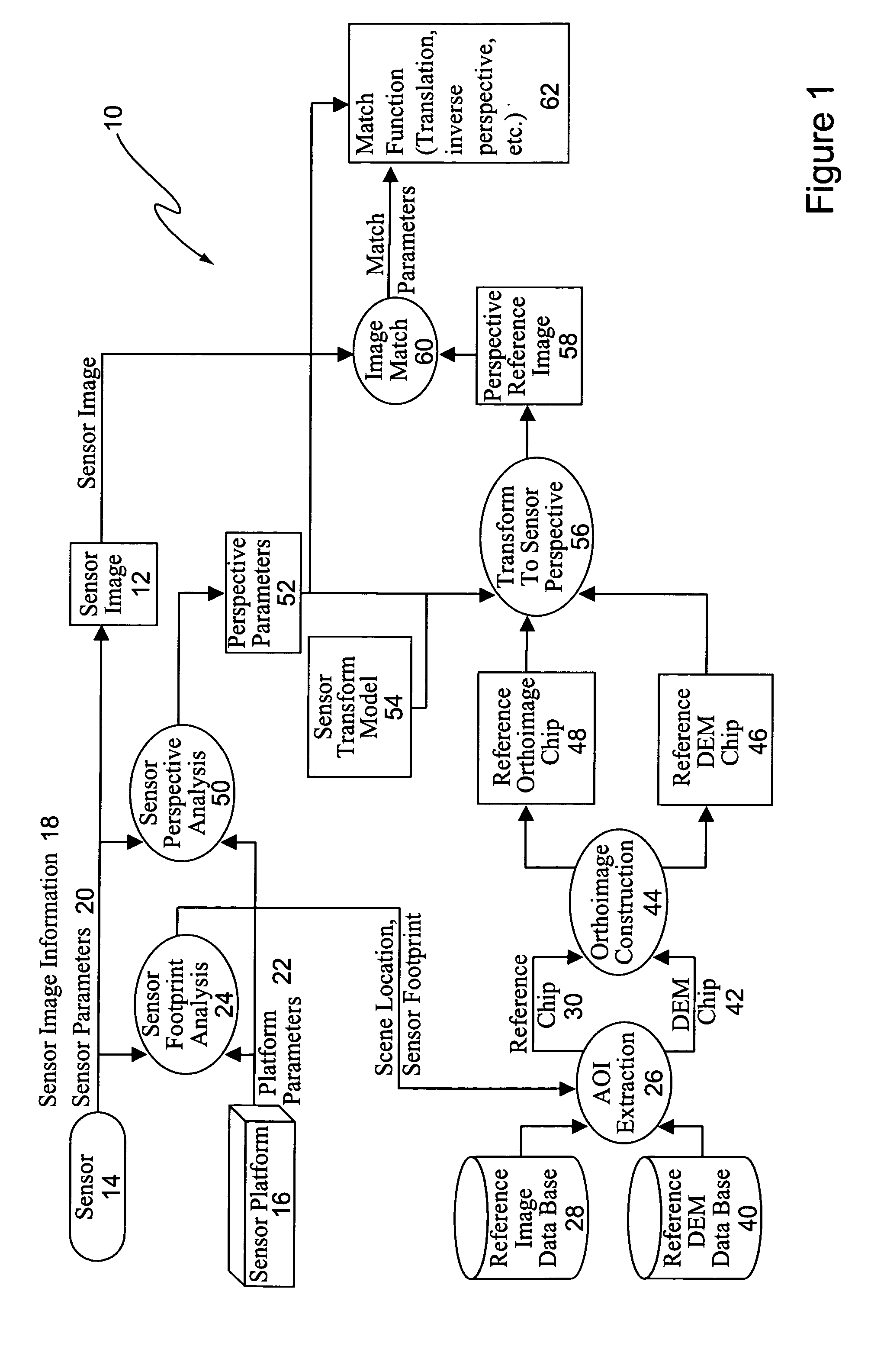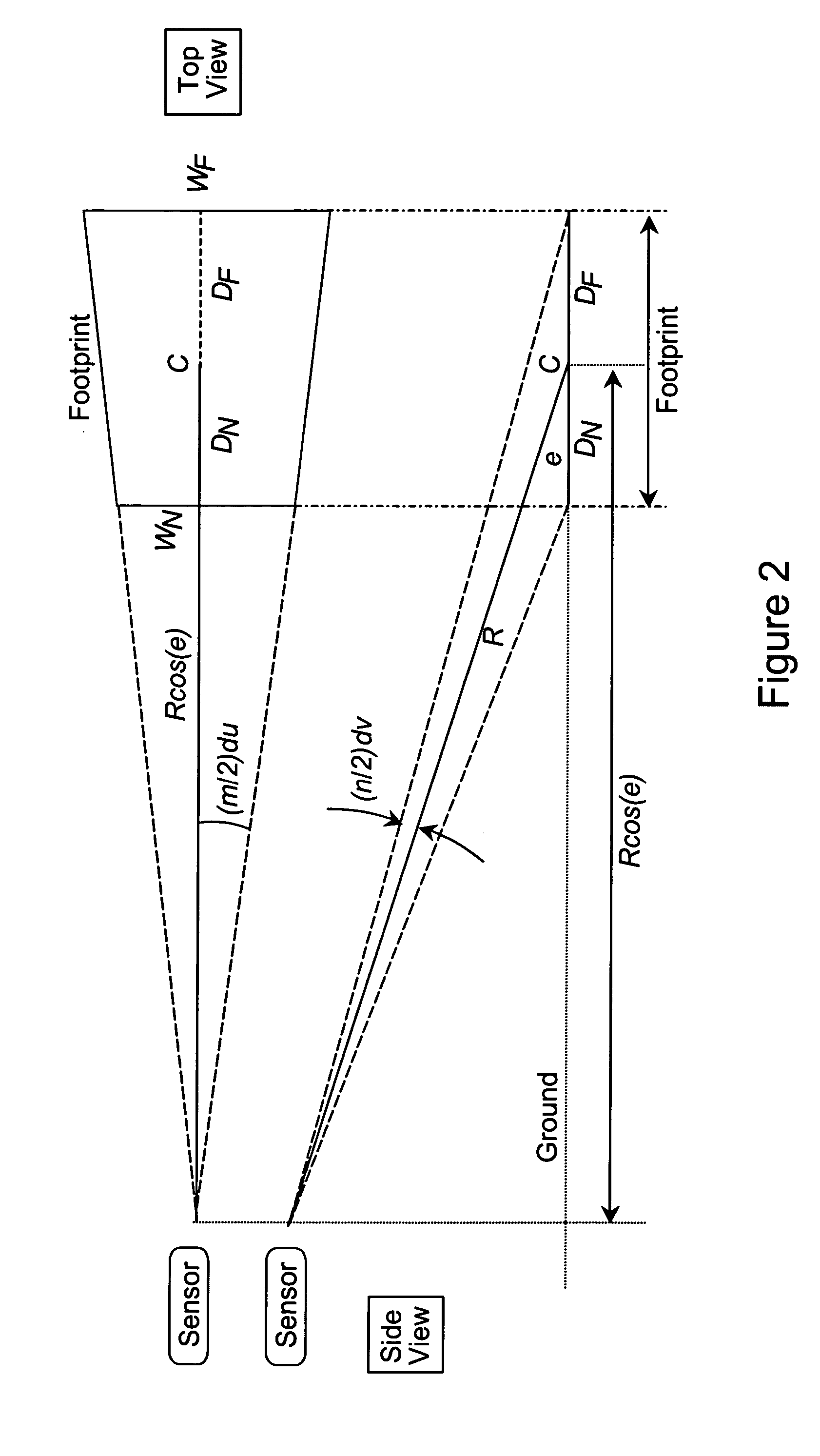Processing architecture for automatic image registration
a processing architecture and image technology, applied in image data processing, scene recognition, instruments, etc., can solve the problems of producing uncertainty in the actual orientation and size of the sensed area or footprint, and achieve the effect of significantly different perspectives of the scene, high accuracy and high precision
- Summary
- Abstract
- Description
- Claims
- Application Information
AI Technical Summary
Benefits of technology
Problems solved by technology
Method used
Image
Examples
Embodiment Construction
[0030] Generally, in accordance with the present invention, a small sensor image is matched to a larger reference image. The large reference image typically covers a relatively large area of the earth at a resolution of approximately the same, or better than, that normally expected to be seen in the sensor image. The reference area may be any area that can be the subject of a controlled imaging process that produces an image with known geometric characteristics and know geometric relationships between locations in the image and locations in the subject area. For example, the reference area may be a portion of a space assembly or an area on the human body. This reference typically involves hundreds of thousands, or even millions or more of pixels (picture elements) in each of its two dimensions, and may comprise a pair of such images in a stereoscopic configuration that admits stereography in viewing and measurement. The reference image is geocoded so that a geographic location can b...
PUM
 Login to View More
Login to View More Abstract
Description
Claims
Application Information
 Login to View More
Login to View More - R&D
- Intellectual Property
- Life Sciences
- Materials
- Tech Scout
- Unparalleled Data Quality
- Higher Quality Content
- 60% Fewer Hallucinations
Browse by: Latest US Patents, China's latest patents, Technical Efficacy Thesaurus, Application Domain, Technology Topic, Popular Technical Reports.
© 2025 PatSnap. All rights reserved.Legal|Privacy policy|Modern Slavery Act Transparency Statement|Sitemap|About US| Contact US: help@patsnap.com



